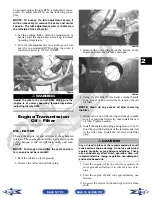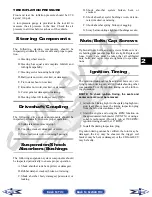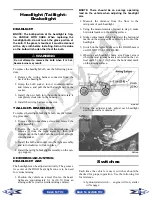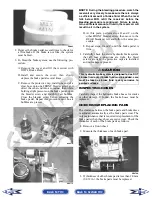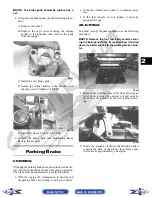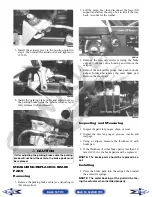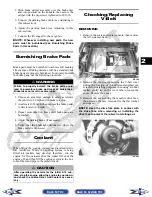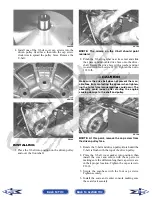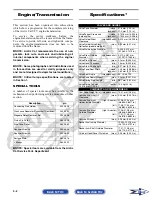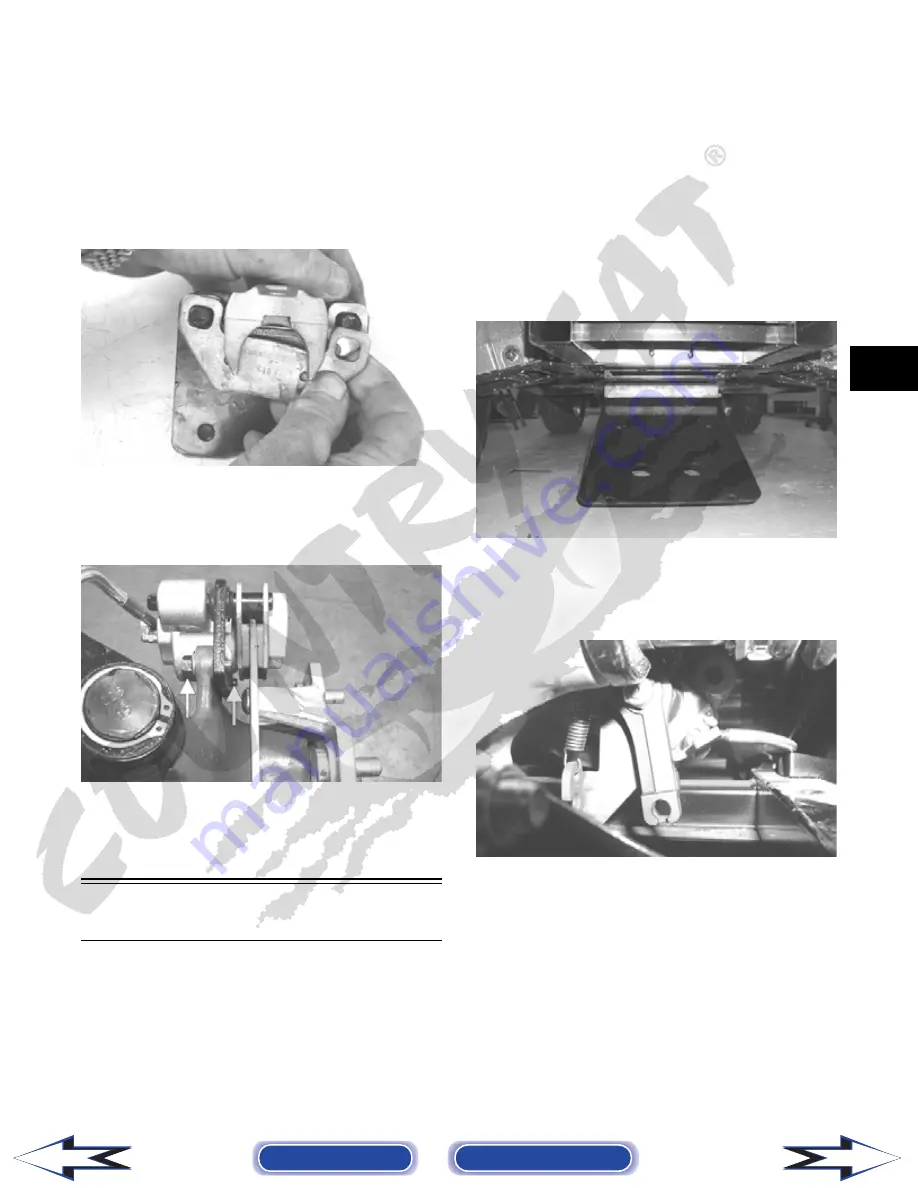
2-15
2
NOTE: The brake pads should be replaced as a
set.
4. To replace the brake pads, use the following proce-
dure.
A. Remove the wheel.
B. Remove the cap screws securing the caliper
holder to the knuckle; then remove the pads
from the caliper.
PR237
C. Install the new brake pads.
D. Secure the caliper holder to the knuckle with
the cap screws. Tighten to 20 ft-lb.
PR377B
E. Install the wheel. Tighten to 45 ft-lb.
5. Burnish the brake pads (see Burnishing Brake
Pads in this section).
Parking Brake
CHECKING
Although the parking brake has been adjusted at the fac-
tory, the brake should be checked for proper operation.
The brake must be maintained to be fully functional.
1. With the engine off, transmission in neutral, and
the parking brake set, attempt to move the vehicle.
2. If the rear wheels are locked, it is adjusted prop-
erly.
3. If the rear wheels are not locked, it must be
adjusted (set up).
ADJUSTING
To adjust (set up) the parking brake, use the following
procedure.
NOTE: Remove the four rear body screws secur-
ing the belly panel to the frame and allow it to drop
down for better access to the parking brake actua-
tor.
PR096
1. Remove the parking brake cable from the actuator
lever; then remove the actuator nut and actuator
lever. Note the position of the lever before remov-
ing.
PR098
2. Rotate the actuator clockwise (hand tight) until it
contacts the back of the piston; then rotate coun-
terclockwise approximately one spline.
Back to TOC
Back to Section TOC
Next
Back









